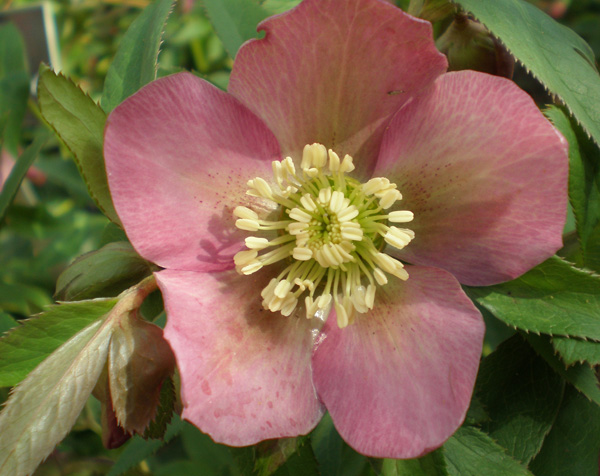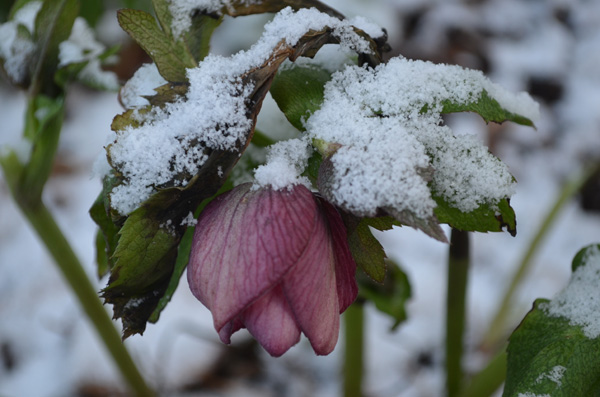Lenten Rose
If you ask my favorite flower, I will have trouble answering. It depends on the time of the year, my mood, and if I’m growing it in my own garden. But, I can honestly say that Lenten Rose (Helleborus orientalis) is one of my favorites at this time of year. True, it doesn’t have much competition, but why should that matter? These sunny blooms are colorful and bright. Cheerfully holding snow on their leaves like it’s no big deal. Perhaps, you might wonder if they keep their heads down by design.
What’s in a Name: Lenten Rose
This year, Lent started on February 17 and it will run through April 3. We expect our collection of species, hybrids and cultivars in the genus Helleborus will bloom throughout this time, hence the name, Lenten Rose. The blooms, which may remind you of buttercups or ranunculus, are from the same family, Ranunculaceae. They come in a wide variety of colors from white to pink to light rose-purple, often with charming freckles! One reason I love them so much is that they seem to show such character in their patterning, not just on a particular flower but as a collection of blooms, either in the garden or cut in a bowl. The botanical name, Helleborus orientalis, is a whole different story — you can read about why it is so named as a reference to the plant’s poisonous nature.

Look closely at the blooms and you can see colorful veining in the flowers — which are actually sepals, not true flowers. Another characteristic of Lenten Rose is that the color of the sepals darken as you get closer to the edges. Image by Tom Hennessy.
If you like to collect plants, Hellebores are a great one to start with. If you expand beyond Lenten Rose to include all the plants of the genus, you will find blooms in burgundy, purple, pink, violet, yellow, cream, white (also known as the Christmas Rose, Helleborus niger), green (also known as the Stinking Hellebore or Helleborus foetidus) and any mixture thereof. There are so many different traits and patterns to choose from! Hellebores make quite a display when grouped together in a woodland garden or on a hillside. But, best of all, if you allow them to go to seed, as they do naturally each year, they reproduce in great numbers and you can give them to friends or trade with other plant lovers. Also, Plant Records Curator and Horticulturist, Laurel Matthew, tells me that Hellebores easily hybridize and, when they do, the resulting plants are named Helleborus ×hybridus or Helleborus × hybridus (depending on whether the hybridization is natural or artificial). Who knew a little space could mean so much!
If you have a yard with trees and some shade Hellebores are a wonderful addition to your garden. Finding flowers that do well in shade isn’t easy but these beauties do well in shade and they thrive in soil with lots of rich composted organic matter. If you have trees, you likely have the rich organic matter already — composted leaves. Now you have one more reason NOT to bag those leaves! Simply rake them into your beds each fall and if you don’t have Lenten Rose or hellebores planted already, you’ve just made the perfect place for your new collection of winter friends.

Lenten Rose (Helleborus orientalis) ‘Maroon Strain’ can be found in the Flagler Garden.
